Attachments for motor cultivators: selection and use
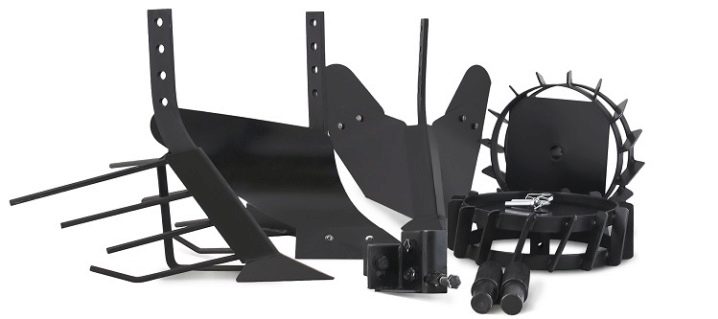
A motor-cultivator is a necessary thing for a summer resident, through which today you can simplify working work. With this device, they loosen the earth, weed it, getting rid of harmful weeds. It is indispensable when the owner of the family has health problems, because based on the functionality and available attachments, it can significantly reduce the load associated with hard work. Let's look at the features of the choice of attachments for motor cultivators, and also note some of the nuances of their use.
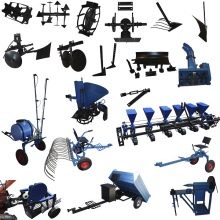
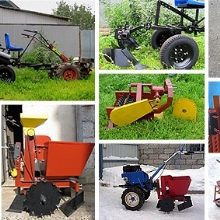
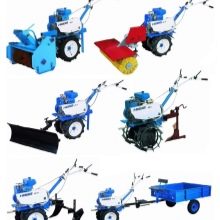
Attachment types
Today, many attachments are provided for cultivating devices. Additional equipment has a different purpose.
Trailer
In fact, this is a trolley that is needed to transport some kind of cargo. This equipment, depending on the type of model, can withstand a weight in the range of 250-500 kg. For increased convenience, the trailer can be fitted with a seat, thus reducing the burden on the user.
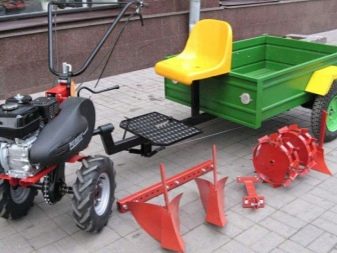
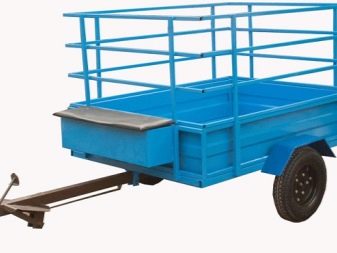
Plow
The purpose of such a nozzle is to plow the soil of a large area. Experienced summer residents today have learned how to use a plow for planting and harvesting potatoes. If you understand the settings, you can work the soil at different depths without much effort.
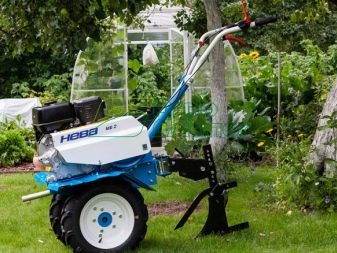
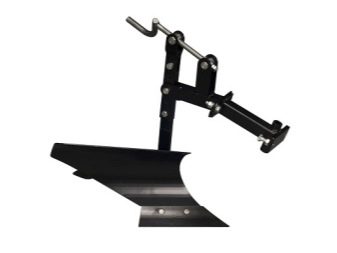
Hiller
This attachment differs depending on the model. Today, you can buy both double and single row products on sale. The purpose of the device is not only hilling grown potatoes.
They can simplify the process of sowing vegetables by creating furrows.
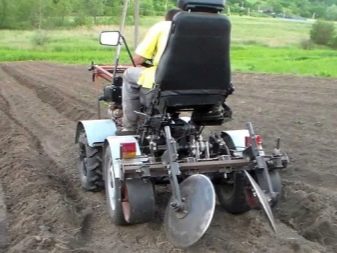

Adapter
This is a rather demanded piece of equipment, which is nothing more than a seat device. With it, you can turn your rototiller into a mini-tractor. This is a rear axle with an existing seat for the user. In addition, the equipment is equipped with a trailer hitch.
The following attachments are called auxiliary attachments:
- a potato digger that facilitates the collection of potatoes;
- mowers that help get rid of weeds;
- a potato planter, thanks to which it will be easier to plant potatoes;
- weeder, with which you can quickly get rid of weeds in the aisles;
- a snow blower that efficiently removes snow;
- a mechanical brush to help remove debris;
- a pump that irrigates the desired areas of the soil.

How to choose?
It is important to understand that attachments are not universal and are selected individually for each cultivator. For example, a lug is considered a must purchase, since the wheels of the cultivator often slip when working with the soil. To choose the right option correctly, you will have to proceed from the walk-behind tractor model.
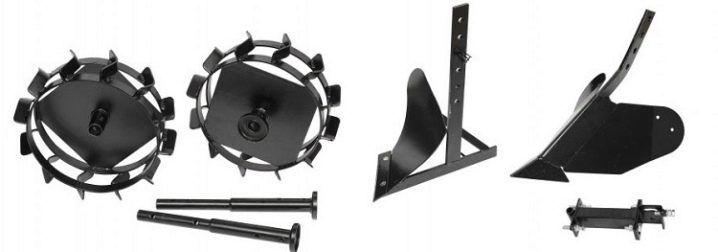
Cutters
As for the cutters, they are divided into two types: saber and crow's feet. Manufacturers add the first variety to the walk-behind tractor. It differs in a different number of sections, due to which the processing width changes, which can reach 135 cm. In general, such cutters are good for work and are convenient for disassembly.
This is important in the event of a breakdown, because it allows you to replace the problematic part, and not the entire structure. These cutters can be sharpened, but the disadvantage of the attachments is the fact that they work well and for a long time only on soft soil. If the soil is dense and complex, then it is more advisable to purchase "crow's feet".They are usually not included in the basic kit, but they prepare the soil for planting potatoes quite well.
The disadvantage of such cutters is that they cannot be disassembled. If any part breaks in them, they will have to be changed completely.
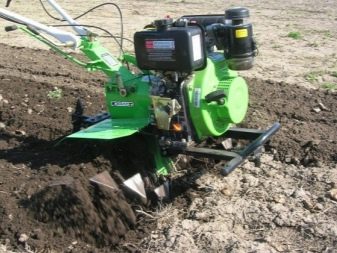
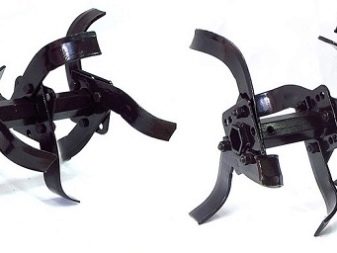
Plow
When choosing a plow, it is important to consider the type of soil. For example, the variant with one share of the single-furrow type is good when the soil is light. If the soil is difficult, it is worth looking at a product of a rotary type with two shares. It will plow the ground in exactly one direction.
As for preparing the soil for planting and hilling, you need to take the option with a V-shaped share. It is also important to consider the power of the unit. For example, single-row hillers with a fixed width are suitable for a walk-behind tractor with a capacity of 4 liters. with. The rotary device does not need a hitch, since they are installed instead of the wheels of the walk-behind tractor.
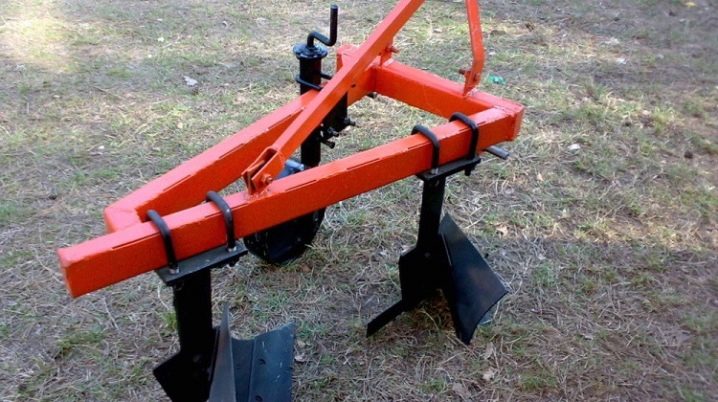
Diggers
The potato digger is selected based on the type of root crops harvested. Considering that it can be fan-shaped and rattling, it is worth noting: the former is cheaper and less effective, since after it a little more than 10% of the crop remains in the ground. This is not scary in a small farm, since you can also collect the remaining root crops manually. The variant of the vibration type is distinguished by lower losses (no more than 2%), works by means of vibration, shaking out everything except the fruits.

Mowers and adapters
With regards to mowers, you will have to choose between rotary and segment ones. The former are easier to maintain, the latter are cleaner than their rotary counterparts. The adapter is available for steering wheel and steering wheel. The first option is equipped with a seat, a lift lever and a brake, it is cheaper, however, the working capabilities of the steering mechanism are significantly greater. It can perform the functions of a grader, mini-tractor, dump truck and arable unit.
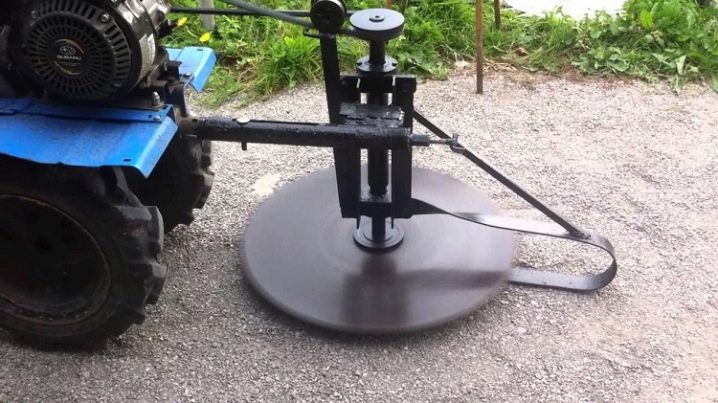
Snow blower
It is important to decide on the type of device here. This can be a moldboard shovel, a brush mechanism, or a rotary thrower. The first option is cheaper than all varieties, and its width can vary in the range of 80-150 cm. At the same time, for a larger size, it is worth purchasing a device with higher power.
However, the efficiency of shovels is inferior to rotary counterparts. The auger rotor products are highly productive and are able to cope with the removal of snow cover up to half a meter. Brush-type hinges are needed where it is necessary to clean the treated surface as delicately as possible. For example, in the case of expensive decorative coatings.
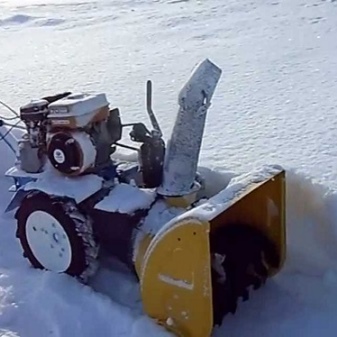
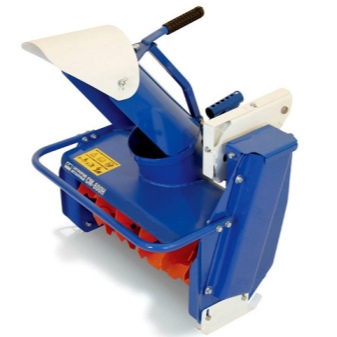
Motor pumps
When purchasing such equipment, you need to take into account its performance. For example, the average range may be 20 or even 30 cubic meters per hour. The pressure that will be created during operation can be 4-5 m with a suction depth of about 10 m.
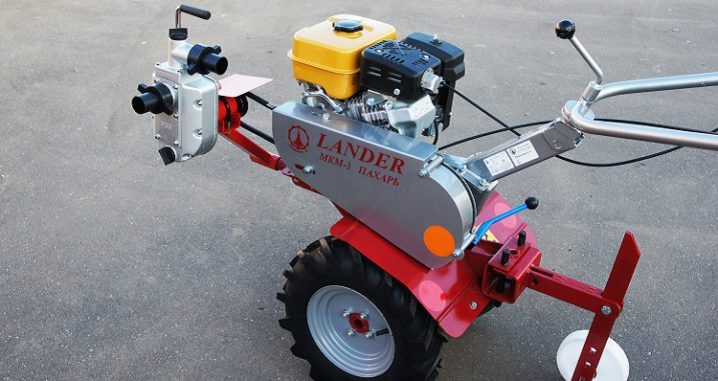
Operating tips
In order for the cultivator to work properly and for a long time, it must be used correctly. Fresh oil should be poured into it at the beginning of the season. Before starting work, you need to warm up the internal combustion engine. When the engine is warm, you can start digging the soil. This is done, as a rule, in 2 passes. If the unit itself is equipped with a reverse function, it is used to avoid turning and accelerating digging up the soil. If there is no reverse gear, you will have to turn the cultivator using the transport wheels. Of course, this will affect the processing speed.
It is important to sharpen the cutters in a timely manner, since the quality of soil loosening directly depends on this. Sharpened cutters can go deeper into the soil more easily. So that they do not jump out of it during work, it is necessary to use a brake claw during soil cultivation. It is important to adjust the locking height of the brake claw.

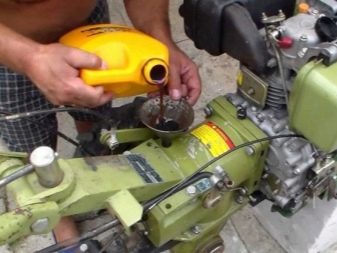
When cultivating the soil mechanically, you can simultaneously plow and fertilize the land. However, for more efficient work, it is necessary to adjust the technique, adjust the plowing width and the depth of loosening.This is determined based on the type of soil and the available area. For example, if you need to plow hard and difficult soil, it is worth adjusting the working depth to 20-25 cm. If it is light, 15 cm is enough.
To adjust the depth to a greater value, achieve a position in which the unit rests on the ground with its entire base. In another position, it will unnecessarily sink into the ground or be pushed out of the ground. To attach the harrow to the unit, lift it 15 cm above the ground. In order to simplify this work, use specialized stands.
Before digging up the site, prepare the soil. In order not to shorten the life of the cultivator, you need to get rid of stones and various debris in advance. Next, you can pull the cord, which will be the guideline for the first row of plowing. It is easier and smoother to till the soil this way. After - check the readiness of the unit in a small area. Next, you can place the cultivator on the main site at the beginning of the furrow.
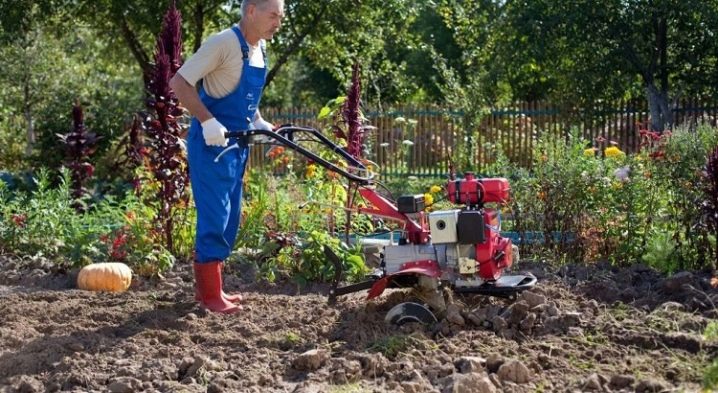
Initially, it is only slightly deepened into the ground, slightly pressing downward. After - they plow along the landmark, holding the handle of the cultivator with their hands. It is important to ensure that the unit runs in a straight line and does not go too far into the soil. At the end of the row, make a U-turn and continue plowing in the opposite direction.
In this case, one nuance should be taken into account: the speed of the movement of the mechanism should be low, and the speed of rotation of the cutter should be high. This will contribute to a more uniform soil cultivation. When plowing, you can move not only in rows, but also in a circle, increasing its diameter. Also, if the plot resembles a square, it can be plowed in a zigzag pattern. By using the correct nozzle type, parallel beds can be formed.
In the next video, you will learn about the capabilities of a motor cultivator using attachments.



































































The comment was sent successfully.